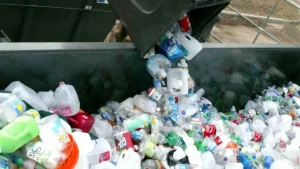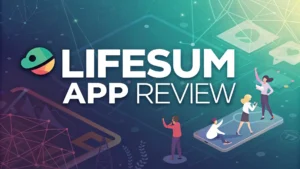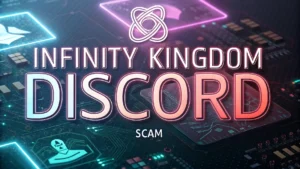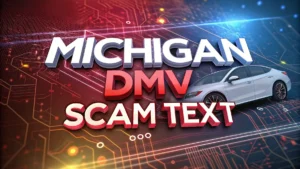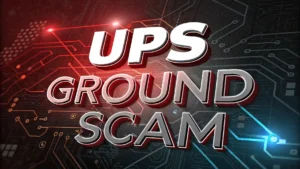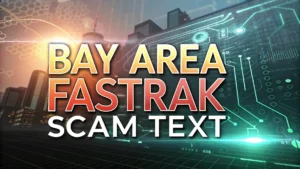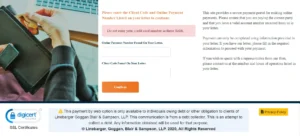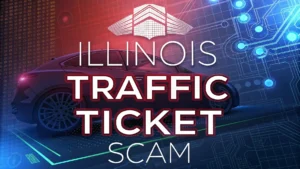In today’s digital world, scams are becoming more clever and harder to spot. One such threat making headlines is the KSDOT.GOV scam. If you live in Kansas or receive messages related to tolls, this blog post is for you.
The Kansas Department of Transportation (KDOT) has been warning people about a dangerous trend called smishing. Smishing is a type of scam where criminals use text messages to trick you into giving away personal information or clicking on harmful links. These fake messages often look like they come from KDOT and claim you owe money for unpaid tolls .
This post will help you understand what the KSDOT.GOV scam is, how it works, and most importantly, how to stay safe. We’ll break everything down in simple terms so you don’t have to worry about confusing jargon or technical language.
Key Takeaways
- Smishing is a scam where fraudsters send fake text messages pretending to be from KDOT.
- These messages often ask for payment for unpaid tolls and include harmful links.
- KDOT does not send unsolicited texts asking for payments .
- Never click on links in suspicious text messages.
- Always verify the source before sharing any personal or financial information.
- Report any suspicious activity to local authorities or KDOT directly.
- Educate your friends and family about this scam to keep them safe too.
- Stay updated with official alerts from KDOT through their verified websites and social media pages .
- Use two-factor authentication on your online accounts to add an extra layer of security.
- Keep your phone number private and avoid sharing it on public platforms.
- Trust your instincts—if something feels off, it probably is.
What Is the KSDOT.GOV Scam?
The KSDOT.GOV scam is a type of smishing attack where fake text messages appear to come from the Kansas Department of Transportation. These messages usually say you owe money for unpaid tolls and urge you to click a link to pay quickly . But here’s the truth—KDOT does not send unsolicited texts asking for payments.
These messages look real because scammers copy the style and wording used by official agencies. They create fake websites that mimic KDOT’s real site to steal your personal information. Once you click the link, you might be asked to enter sensitive details like your Social Security number or credit card info.
This scam has affected many people across Kansas. Some victims say they received multiple texts over several days, making the threat feel urgent. It’s important to remember that KDOT will never demand payment through text message.
If you get a message like this, do not click the link. Delete the message immediately and report it to KDOT or your local law enforcement. Staying alert is the first step in protecting yourself from this scam .
How Does Smishing Work in This Scam?
Smishing is short for “SMS phishing.” It uses text messages to trick people into giving up personal information. In the KSDOT.GOV scam, fraudsters pretend to be KDOT and send messages claiming you owe money for unpaid tolls .
These messages often include a link that looks official. When clicked, it takes you to a fake website designed to collect your personal data. Scammers may ask for your name, address, phone number, email, or even banking details.
Some messages create a sense of urgency. They might say things like, “Pay now or face legal action,” which makes people panic and act without thinking. This psychological pressure is a key part of the scam.
Once scammers have your information, they can commit identity theft or sell your data to other criminals. That’s why it’s crucial to never share personal details through text messages or unverified websites.
Always double-check the sender’s number and look for signs of fraud. Real government agencies like KDOT will not contact you this way unless you’ve opted in to receive notifications .
Why Are People Falling for This Scam?
Many people fall for the KSDOT.GOV scam because the messages seem real. Scammers copy the language and tone used by actual government agencies. They also design fake websites that look almost identical to KDOT’s real site .
Another reason is fear. Messages often say you owe money and must act fast. This makes people worried about fines or legal trouble. When we’re scared, we make quick decisions without checking facts.
Also, some people are not familiar with smishing or phishing tactics. They believe all text messages from official-sounding numbers are real. This lack of awareness makes them easy targets.
Scammers also use technology to hide their real phone numbers. They can make it look like the message came from a local area code or even a government office number. This adds to the illusion of legitimacy.
That’s why education is so important. By learning how these scams work, you can protect yourself and others. Always take a moment to verify the source before taking any action.
Remember, if something feels wrong, trust your gut. Don’t let fear or urgency push you into making a mistake that could cost you dearly .
Signs of a Fake KDOT Text Message
Knowing how to spot a fake KDOT text message is one of the best ways to protect yourself. First, check the sender’s phone number. Official KDOT messages will come from verified sources, not random numbers or unknown senders.
Next, read the message carefully. Scammers often use urgent language like “Act now” or “Immediate payment required.” They try to scare you into acting fast without thinking. Real agencies give you time to respond and provide clear steps to resolve issues.
Look at the link included in the message. Hover your cursor over it (if you’re on a computer) or long-press it (on mobile) to see the full URL. If the web address doesn’t match KDOT’s official website, it’s likely a scam.
Also, watch out for spelling mistakes or strange grammar. While no one is perfect, scammers often make errors that a real agency would catch before sending a message.
Finally, KDOT will never ask for personal or financial information through unsolicited text messages. If you ever receive a message asking for this kind of data, delete it immediately and report it to the proper authorities .
Steps to Protect Yourself from Smishing Scams
Protecting yourself from smishing scams like the KSDOT.GOV scam starts with awareness. The first step is to never click on links in unsolicited text messages. Even if the message seems official, always verify the source before taking any action.
You should also set up spam filters on your phone. Most modern smartphones have built-in tools to detect and block suspicious messages. Enable these features to reduce the risk of receiving fake texts.
Keep your personal information private. Avoid sharing your phone number on public forums or websites unless necessary. Scammers often gather phone numbers from social media and other open sources.
Use two-factor authentication on your online accounts. This adds an extra layer of security by requiring a second form of verification, like a code sent to your phone or email, before allowing access.
Stay informed about current scams. Follow updates from KDOT and local law enforcement to know what to watch for. Knowledge is your best defense against fraud.
Lastly, talk to friends and family about these risks. The more people know, the safer everyone becomes. Share tips on how to spot fake messages and what to do if they receive one.
What to Do If You Receive a Suspicious Message
If you receive a suspicious message claiming to be from KDOT, the first thing to do is stay calm. Don’t click on any links or reply to the message. Instead, take a few simple steps to protect yourself and others.
Start by deleting the message immediately. This helps prevent accidental clicks later. Next, report the message to KDOT or your local law enforcement agency. They track these scams and use reports to warn others.
You can also forward the message to the Federal Trade Commission (FTC) at spam@uce.gov. This helps officials track trends and build cases against scammers.
If you already clicked the link, act fast. Run a virus scan on your device to check for malware. Then, monitor your bank accounts and credit reports for any unusual activity.
Change your passwords if you entered any personal information. Contact your bank or credit card company to alert them of possible fraud.
Most importantly, don’t panic. Mistakes happen, but quick action can limit the damage. Learn from the experience and share what you’ve learned with others to help them stay safe too.
Real Stories from Scam Victims
Many people across Kansas have shared their experiences with the KSDOT.GOV scam. One victim said she received a text saying she owed $150 in unpaid tolls. The message had a link that looked official, so she clicked it and entered her credit card details.
Within hours, someone used her card to make unauthorized purchases. She had to cancel her card and deal with weeks of stress trying to recover her money. Another person reported receiving multiple texts over three days, each one more urgent than the last.
One man ignored the first message but clicked on the second one when it mentioned legal action. He ended up downloading malware onto his phone, which led to identity theft. His personal data was used to apply for loans he never agreed to.
These stories show how serious the problem is. Scammers target everyday people who simply want to follow the rules. They play on fears and trust to get what they want.
Hearing these real-life examples helps us understand the dangers better. It reminds us to stay alert and cautious, especially when dealing with unexpected messages.
By learning from others’ mistakes, we can avoid falling into the same trap. Awareness is the best tool we have to fight back against these scams.
How to Report the KSDOT.GOV Scam
Reporting the KSDOT.GOV scam is an important step in stopping these criminals. If you receive a suspicious message, start by forwarding it to the Federal Trade Commission (FTC) at spam@uce.gov. This helps officials track patterns and warn others.
You can also report the message to KDOT directly. They have a team that investigates scams and shares updates with the public. Visit their official website or call their office to let them know what happened.
Don’t forget to tell your local police department. While they may not be able to stop the scammer directly, they can record the incident and raise awareness in your community.
If you clicked on a link or gave away personal information, report it to your bank or credit card provider. They can monitor your account for fraud and help you take action if needed.
Sharing your experience with friends and family is another powerful way to spread awareness. The more people know, the less likely they are to become victims.
Taking the time to report scams not only protects you but also helps others stay safe. Your actions can make a difference in the fight against fraud.
Staying Updated on Future Scams
Scammers are always coming up with new tricks, so staying informed is key. Sign up for email alerts from KDOT and follow their official social media pages. They regularly post updates about scams and safety tips.
You can also check the FTC’s website for national scam warnings. They list common fraud schemes and offer advice on how to protect yourself.
Join local community groups or neighborhood apps where people share safety news. Sometimes, neighbors warn each other about new scams before official agencies do.
Set reminders to review your bank statements and credit reports regularly. Early detection of fraud can save you time and money in the long run.
Talk to your employer or school about hosting cybersecurity workshops. Learning together as a group builds stronger defenses against scams.
Above all, stay curious and ask questions. If something seems off, don’t hesitate to double-check. Your vigilance is your best protection in today’s digital world.
Frequently Asked Questions
What is the KSDOT.GOV scam?
It is a smishing scam where fake text messages claim to be from KDOT and ask for payment for unpaid tolls.
How do I recognize a fake KDOT text?
Check the sender’s number, look for urgent language, and avoid clicking links from unknown sources.
Will KDOT ever text me about unpaid tolls?
No, KDOT does not send unsolicited texts asking for payments.
What should I do if I receive a suspicious message?
Delete it, report it to KDOT or the FTC, and avoid clicking any links.
Can I get my money back if I fall for the scam?
Contact your bank immediately and file a report with local authorities to start the recovery process.
How can I protect myself from future scams?
Enable spam filters, use two-factor authentication, and stay updated on current fraud schemes.
Where can I find official KDOT updates?
Visit the KDOT website or follow their verified social media accounts.
What is smishing?
Smishing is a scam that uses text messages to trick people into giving personal or financial information.
Why do scammers pretend to be KDOT?
They use trusted government names to make their messages seem real and gain your trust.



